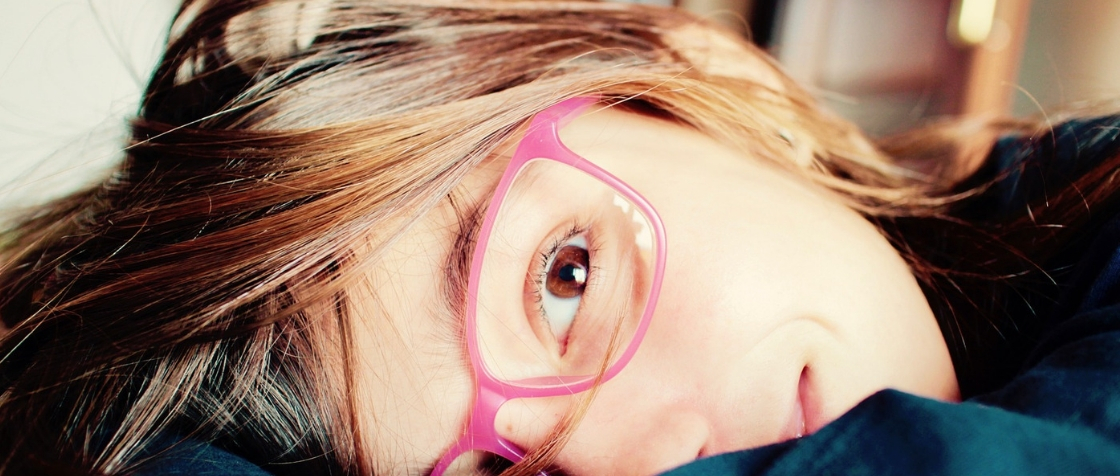Bear in mind that some of the links on this website are affiliate links. If you go through them to make a purchase we will earn a commission at no extra cost to you but helps support our website. Keep in mind that we link these companies and their products because of their quality and not because of the commission we receive from your purchases.
Being able to see is vital for your child to be able to have the visual skills necessary for them to perform well in school. A common question that most parents ask is “What age should I get my child’s eyes examined?”.
Your child’s eyes first officially examined around 6-months when doctor’s are basically just testing pupil responses. Children can get comprehensive eye exams as low as the age of three or four, this all depends on your eye doctor’s office. Some optometrists are more comfortable examining younger children than others, be sure to check with yours to see how young they can examine children.
Table of Contents
Prescription Eyeglasses For Kids

As far as the eyeglasses themselves, many optical retailers online and in-store carry a wide range of prescription eyeglasses for kids, these include your kid’s frames, sunglasses, as well as sports goggles. Some optical retailers will carry glasses for toddlers as well.
When you are choosing frames for your children, you are going to want to pick a frame that fits well, seems sturdy, and one of the most important factors, your child has to like them. If your child does not like the frames, the chances are they are not going to be wearing those glasses.
Signs your child may need glasses
It is not easy to detect vision problems in children, many times your child might not let you know that they are not able to see well. There are signs that may indicate that your child may be experiencing some sort of vision problems, and should be taken for a comprehensive eye exam. Here are some common signs you might be able to notice.
- Squinting – Squinting is one of the most common signs that your child may be experiencing some sort of vision issue. your child may be trying to improve their focus by squinting. This is your brain subconsciously trying to remove the blurry vision. Doing this for extended periods of time will lead to unwanted headaches.
- Covering One Eye – If your child is covering one eye to see, or tilting their head you should definitely take them to get checked out. This could be a sign that the eyes could be misaligned, or they could have a lazy eye. Your child may complain of double vision when they have both their eyes open.
- Sitting close to the television or reading close to eyes – This is a bit harder to notice these days due to televisions being so big these days, but if your child is on a tablet or smartphone and you notice them holding it close to their eyes then this is a sign they might need some sort of vision correction.
- Complaining about headaches – If your child starts complaining about headaches frequently, there is a chance that it could be caused by their eyes.
- Having trouble reading – If you notice that your child is having trouble reading and understanding sentences, it might be worth it to have an eye check-up just to make sure there isn’t anything wrong with their vision.
- Rubbing eyes excessively – If your child is rubbing their eyes constantly, this might be a sign of eye fatigue or strain. It is best to have their eyes checked out.
Why are eye exams important for kids?
It is very important that your child gets the eye care they need while they are young to make sure their eyes are developing as they are supposed to. Vision problems could cause performance problems for your children in school and could affect their safety.
Some conditions could lead to lifelong vision problems and lead to limitations for them as adults. Here are some of the most common eye conditions that are found in children.
- Amblyopia – Amblyopia is commonly referred to as “lazy eye”. This is the most common cause of vision problems among children. When this happens the brain favors one eye more than the other, which then could cause the wandering eye. This is a condition that could lead to lifelong vision problems if left untreated.
- Strabismus – Strabismus is commonly referred to as “crossed eye”. This is when the eyes do not look in the same direction at the same time, this could be caused by nerve injury, as well as dysfunction of the muscles that control the movement of your eyes. This is a condition that has the potential to get worse if left untreated but can be treated at a young age.
- Ptosis – This is a condition in which the upper eyelid is falling or drooping. This is a condition that may require surgery and you should definitely take your child to an ophthalmologist to have it looked at. Ptosis could cause other vision problems if left untreated.
Check out this video below provided by VSP Vision Care on why children need eye exams.
Tips for picking your child’s prescription eyeglasses
After you have gotten an exam done with your eye doctor, if your child does indeed need to wear prescription glasses then there are a few things you should keep in mind when you are looking for glasses for your child.
- Fit – They should fit your child’s face good, and not be too small or oversized. Adjustments to frames can be made by an optician, but it is fairly limited so the frame size has to be correct in the first place. If you are making your prescription glasses purchase online, check out this article to figure out the frame size.
- Your Child has to like them – Whenever you pick out frames for your child, make sure that your child actually likes them as well. This will increase the likelihood that they keep the glasses on. This will provide fewer opportunities for them to break.
- Sports – If your child plays a sport, they do make sports glasses with a prescription for active kids. These glasses are designed to be more durable and come with padding at high contact places.
- Polycarbonate/Trivex lenses – Polycarbonate or Trivex lenses should always be purchased for your child unless otherwise directed by your eye doctor. Polycarbonate and Trivex lenses offer the most impact-resistant lenses, which provide an extra level of safety for children as they tend to be more active. Polycarbonate lenses also have built-in UV protection, to protect your child’s eyes from the harmful rays from the sun.
- Blue Light Protection – With the boom in technology children today are consumed by devices from a very young age. Blue light exposure from these artificial sources such as tablets, smartphones, and televisions can have some serious concerns, especially in children.
- Backup Pair – Kids can be particularly hard on their eyeglasses, it is a good idea to have a backup pair just in case the first pair breaks. This is extra important if your child has a strong prescription and may have a hard time if they didn’t have their glasses.
- Photochromic/Sunglasses – Photochromic or sunglasses could be a good choice to provide glare reduction, along with comfort and protection from the sun’s harmful UV rays.
- Warranty – It is always good to check with the retailer that you are purchasing your child’s eyeglasses to see what kind of warranty they have for their frames. Most retailers come with some sort of warranty on their frames.
Conclusion
Sometimes your eye doctor will make recommendations on how your child should be wearing their glasses. Sometimes it could be full-time, sometimes just for school work. Most of the time there won’t be specific recommendations and it will be up to you as the parent to make sure your child wears their glasses.
Remember your child being able to see is directly related to how well they do at school so keep an eye out for any of the warning signs that they might be having vision problems.
Does your child wear prescription glasses? When did you first notice? Let me know below! As always thank you all for stopping by at Eye Health Headquarters, if you have any comments, or questions don’t hesitate to leave them in the comment box below and I will get back to you as soon as I can.
